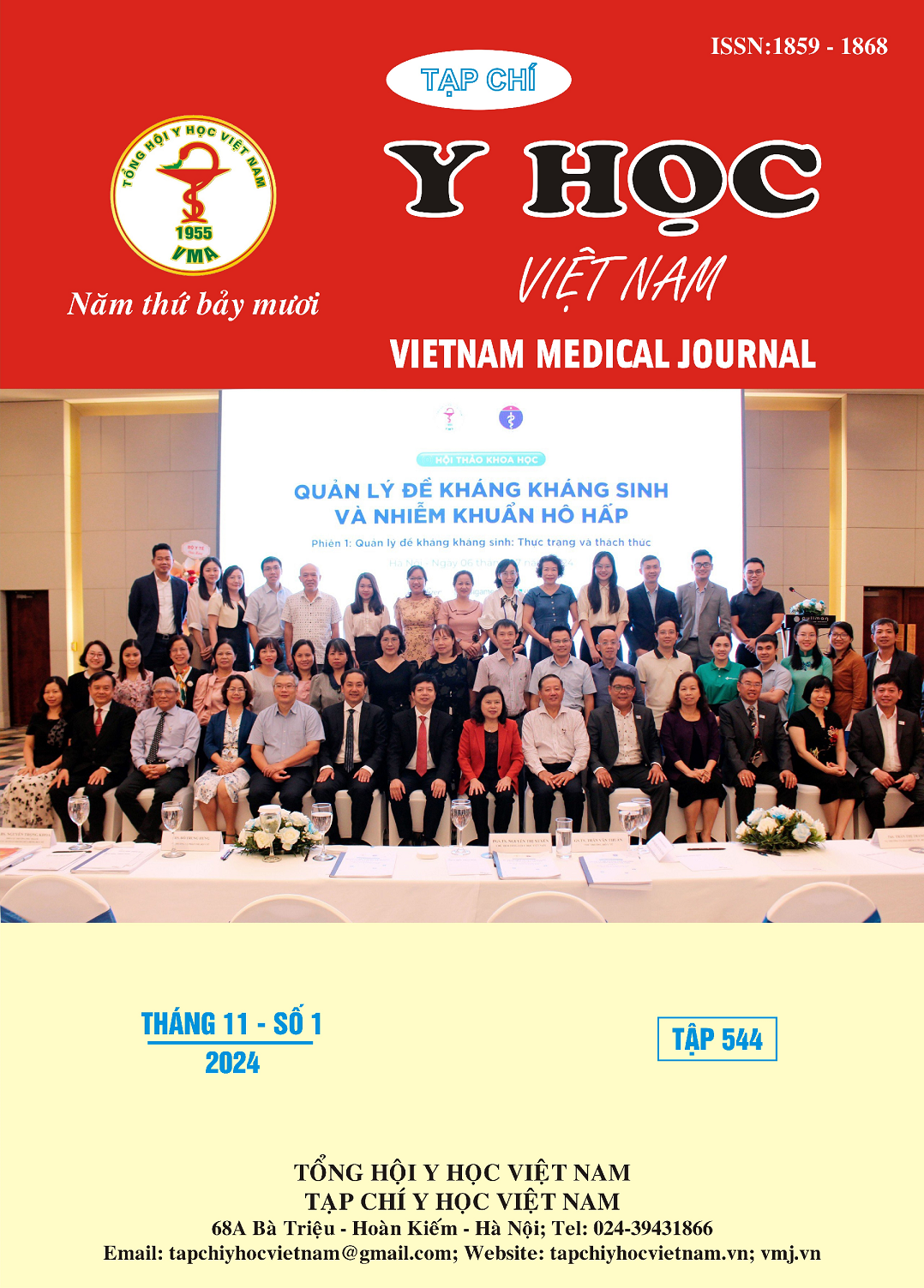RELATIONSHIP BETWEEN HbA1c, GLUCOSE LEVEL AND RETINAL DAMAGE IN PATIENTS WITH DIABETES TYPE 2 AT THAI NGUYEN NATIONAL HOSPITAL
Main Article Content
Abstract
Objective: Analysis of the relationship between HbA1c, glucose level and the risk of diabetic retinopathy in patients with diabetes type 2. Patients and methods: 1012 patients with diabetes type 2 (1943 eye) at Thai Nguyen National Hospital. A cross-sectional study. Results: - There are 16.2% of eyes with diabetic retinopathy, of which the most common damage are microaneurysms, retinal exudates and retinal hemorrhages. - There are 19,1% eye of proliferative DR and 80,9% eye of non-proliferative DR with different levels, in there moderate non-proliferative DR are highest rate with 46,5%. - HbA1c in the group of patients with diabetic retinopathy was 8.34 ± 1.81, which was statistically different from the group without diabetic retinopathy 7.46 ± 1.64 (with p < 0.001). - Glucose in the group with diabetic retinopathy was 8.36 ± 3.03, in the group without diabetic retinopathy was 7.24 ± 2.54 (p < 0.05). Conclusion: HbA1c and glucose level were important risk factors for diabetic retinopathy. Good control of HbA1c and glucose level will limit the development of diabetic retinopathy.
Article Details
Keywords
Diabetes type 2, Diabetic retinopathy (DR), Glucose
References
2. Tien Y. Wong M, PhD, Jennifer Sun, MD, MPH, Ryo Kawasaki, MD, PhD, et al. The International Council of Ophthalmology Recommendations for Screening, Follow-up, Referral, and Treatment Based on Resource Settings. American Academy of Ophthalmology. 2018;Volume 125, Number 10, October 2018:pp1608-1622.
3. Hoàng Thị Phúc, Phạm Trọng Văn, Nguyễn Hữu Quốc Nguyên. Nghiên cứu tình hình bệnh võng mạc đái tháo đường tại Việt Nam. Kỷ yếu hội nghị Nhãn khoa. 2010;170.
4. Nakagami T, Takahashi K, Suto C, et al. Diabetes diagnostic thresholds of the glycated hemoglobin A1c and fasting plasma glucose levels considering the 5-year incidence of retinopathy. Diabetes research and clinical practice. 2017;124:20-29.
5. Wong TY, Sun J, Kawasaki R. Guideline on Diabetic Eye Care. American Academy of Ophthalmology. 2018;125(10):1608-1622.
6. Viswanath K, McGavin DD. Diabetic retinopathy: clinical findings and management. Community eye health. 2003;16(46):21-24.
7. Chua SYL, Welsh P, Sun Z, et al. Associations Between HbA1c Across the Normal Range, Diagnosed, and Undiagnosed Diabetes and Retinal Layer Thickness in UK Biobank Cohort. Translational vision science & technology. 2023;12(2):25.
8. Lê Thị Hiền. Mô tả đặc điểm lâm sàng, cận lâm sàng bệnh võng mạc đái tháo đường tại bệnh viện đa khoa tỉnh Hòa Bình năm 2020 và một số yếu tố liên quan. Luận văn Chuyên khoa cấp 2, Trường Đại học Y Hà Nội. 2020.
9. Almutairi NM, Alahmadi S, Alharbi M, Gotah S, Alharbi M. The Association Between HbA1c and Other Biomarkers With the Prevalence and Severity of Diabetic Retinopathy. Cureus. 2021;13(1):e12520.
10. Abdulrahman Hamzah Badawi MA-B, Mohammed Abusayf, et al. Prevalence And Risk Factors of Diabetic Retinopathy: A Clinical-Based Cross Sectional Study in Madinah's Tertiary Diabetic Centre, Saudi Arabia. IJSR - International journal of Scientific research. 2016; Volume: 5, Issue: 3, March 2016, ISSN No 2277 - 8179, IF: 3.508:pp587-590.


